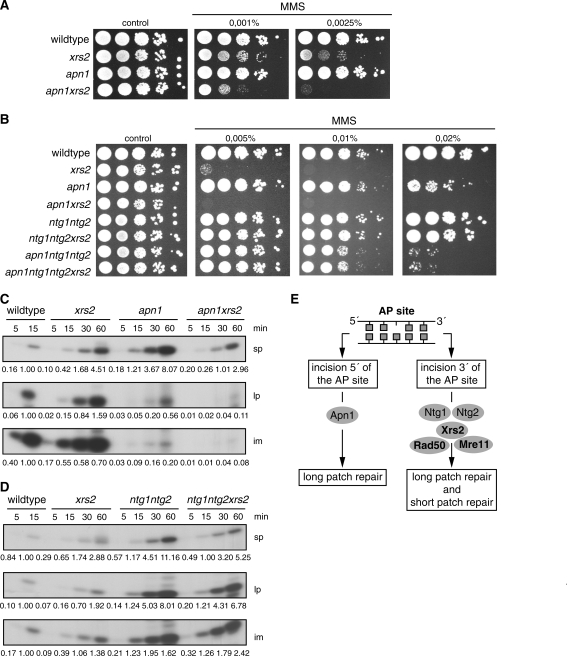Figure 5.
Epistatic relationship of XRS2 to other BER genes. (A, B) Analysis of MMS sensitivity. Shown are serial dilutions of cells on plates containing MMS as indicated. (C) Repair capacity for the repair of the uracil-containing oligonucleotide of cell extracts obtained from the apn1 and the apn1xrs2 mutant compared to cell extracts from wildtype cells and from the xrs2 single mutant. (D) Repair capacity for the repair of the uracil-containing oligonucleotide of cell extracts derived from the ntg1ntg2 double mutants and ntg1ntg2xrs2 triple mutant compared to cell extracts derived from wildtype cells and from the xrs2 single mutant. In each case, one representative experiment out of three is shown. (E) Proposed model for the allocation of XRS2 to the AP-lyase-mediated repair pathway. The phenotypes of the apn1 and xrs2 single mutants are combined in the apn1xrs2 double mutant; otherwise, the effect of xrs2 is suppressed in the ntg1ntg2 mutant. These findings assign the MRX complex downstream of the AP-lyases where short-patch and long-patch repair products can be synthesized.

